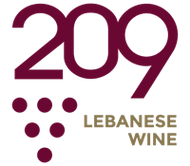What makes Lebanese wine what it is?


Winemaking in Lebanon dates back to Phoenician rule.
The Lebanese winemaking industry has been relatively active in the recent past, with a current count of 60 wineries compared to just 5 in the early 1990s, and a current annual production of 9 million bottles. There’s also been an increased interest in wine culture in Lebanon as wineries have been reporting greater numbers of visitors.
Most Lebanon’s wineries are considered small-to-medium-sized and are known to place great emphasis on the quality of wine, thereby resulting in somewhat conservative quantities being produced.
Lebanese wine has created a name for itself in international markets and is considered a quality ambassador to the country abroad. That said, its production remains rather small, with approximately 9 million bottles being produced annually according to The Union Vinicole du Liban (UVL) statistics
Lebanon has the unique advantage of many microclimates, which allows for wine production in different regions across the country. Most wineries are located in the Bekaa Valley and Chouf region, where a natural water table and clay-calcareous soils—respectively—offer appropriate climates for wine production. More recently established wineries are veering towards Batroun, where vineyards are planted either sea-facing or further inland
Lebanese wine is very distinct in taste. What makes wine what it is is its “terroir”. Terroir is a term given to explain the grapes’ upbringing in a sense; the soil, climate, terrain, and even surrounding micro flora. That said, among Lebanese wine, wines coming from different regions have different characteristics. Here’s a glimpse of the different Lebanese regions:
The Bekaa valley is Lebanon’s most known region when it comes to winemaking. The region uses its own water supply that comes from the melting snow on the Lebanese mountains. Its Mediterranean climate explains the dry summers and wet, cold, winters. Despite its limited rainfall, the Bekaa region is Lebanon’s most important farming area.
The second most wine-producing region in Lebanon, after Bekaa, is Batroun, where grapes are grown at altitudes between 400 and 1,300m, and either facing the sea or more inland. The region’s very diverse character makes it a hub for the birth of boutique wineries and distinct wines.
The terroir in the Mount Lebanon region is characterized by its warm summers and mild winters, which render the grapes distinct in taste. The area is exposed to the Mediterranean on its west and southwest, and has calcareous clay soil that delays the ripening of the grapes and is known to produce more acidic wines.
The South’s famous range of microclimates, along with its valleys and plateaus, give the region great potential in producing remarkable and different wines. Grapes are generally grown at altitudes that range from 600m to 1,300m in soils that also differ from one area to the next.
Although a great number of the grapes grown in Lebanon are originally French (Cabernet Sauvignon, Merlot, Syrah, …etc), there’s so much more to the making of wine that sets Lebanese wine apart, and makes it worth the experience. Stay tuned for a closer look at the different regions and their distinct wines!
According to Mr Zafer Chaoui, president of Union Vinicole du Liban, the exceptional weather permits for the Lebanese wineries to produce natural wine with almost no use of chemicals along with a unique terroir in altitude.
The terroir plays a very important role in the taste of the wine (its phenolic composition, fruitiness ….
The terroir is affected by several factors:
- Altitude
- Orientation
- Soil composition
- Topography
He also specified that Lebanon is an extremely small wine producing country and therefore we have no other choice but to produce high quality wines. Besides, we need to compare what is comparable (we can’t compare a cheap Bordeaux or a Chianti with a “Château” wine).
Furthermore, we shouldn’t forget that Lebanon doesn’t produce colored bottles, corks, caps… all of the packaging materials has to be imported which leads to a cost increase.
Enjoy a bottle from our selection, and live the story of Lebanese Wine

